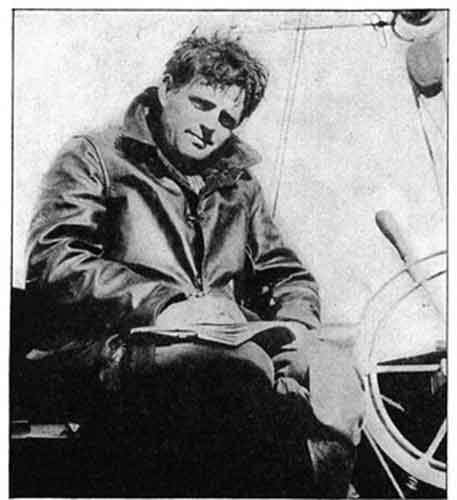Next time you drive through the eucalyptus forest on Highway 101
near Aromas, I’d like for you to think for a moment about Jack
London. Perhaps if it wasn’t for the famous Bay Area writer, the
South Valley would never have had that massive grove of towering
trees as one of its landmarks.
Next time you drive through the eucalyptus forest on Highway 101 near Aromas, I’d like for you to think for a moment about Jack London. Perhaps if it wasn’t for the famous Bay Area writer, the South Valley would never have had that massive grove of towering trees as one of its landmarks.
Originally evolved in the arid climate of Australia, eucalyptus trees are now a vital part of California’s culture. Like many things in our state, they got their start here during the Gold Rush. Many fortune-seeking Australians noted California had a dry climate similar to regions of their own home continent. These settlers suggested importing seedlings of the fast-growing eucalyptus trees and planting them here to provide a source of hardwood lumber for home construction and furniture.
The first eucalyptus seeds in California were probably planted in 1851. They were of the Tasmanian Blue Gum species which could grow 20 feet in a year and reach up to 200 feet. The Shell Mound Nursery in Alameda was the first to offer the seeds for sale and by the middle of the 1850s, many other nurseries followed suit because of the tree’s increasing popularity.
With thousands of settlers coming out west with the completion of the transcontinental railroad, many Californians feared shortages of wood. The California Academy of Sciences in 1871 published a paper titled “On the Economic Value of Certain Australian Forest Trees and Their Cultivation in California” which advocated mass plantings of Blue Gum eucalyptus.
Nine years later, the University of California distributed Blue Gum seedlings throughout the state. Farmers – including many in the South Valley – planted eucalyptus along their fields to serve as windbreaks and keep their soil from blowing away. The trees also were planted along country roads and long driveways to create a majestic passageway to trek through.
Thanks to the building of the Panama Canal in the early 20th century, the eucalyptus had yet another resurgence.
In the 1910s, rumors raced through the United States that overharvesting on the East Coast was severely depleting that region’s wood supply. Some Californians figured when the canal opened in 1914, they could send eucalyptus lumber back east via Panama and make millions.
At the peak of his fame, London encouraged California speculators to plant eucalyptus seedlings in hopes of future fortune. He extensively studied government literature on the subject and even went to the University of California at Davis to meet with agricultural professors in his research. From his findings, he wrote essays and articles enthusiastically pushing landowners to plant groves of eucalyptus.
London took his own advice, ordering in January 1910 some 15,000 eucalyptus trees for his Sonoma homestead.
By 1912, he had planted more than 100,000 eucalyptus trees in his Valley of the Moon Ranch. Some San Benito County farmer emulated London and planted his own massive forest of eucalyptus – the one we now see straddling Highway 101. Unfortunately, as the seedlings grew into mature trees all across the state, Californians found they’d made a major mistake. Of the 600 species of eucalyptus they could have imported from Australia, the Blue Gum was the least useful for turning into lumber. When these trees were cut down, they twisted and split as the hardwood cured. California’s promising eucalyptus timber industry became a financial flop.
Despite its failure, the eucalyptus is now as much a part of California’s image as the Golden Gate Bridge and Hollywood. In fact, the eucalyptus forest along Highway 101 had a cameo role in one of Hollywood’s greatest film productions. Alfred Hitchcock s masterpiece Vertigo features its stars Jimmy Stewart and Kim Novak driving through the grove on their fateful way to San Juan Bautista.
I’d like to think maybe London was a century ahead of his time with his idea of growing massive eucalyptus groves in California. As we face major energy and global warming challenges in the coming decades, I believe Australia’s trees might help society deal with these serious concerns.
Eucalyptus are extremely fast growing and can easily survive in arid landscapes. This makes them a terrific tree species for “carbon farming” – planting vegetation to capture and sequester the carbon dioxide in the air that contributes to the heating up of our planet. And with their abundance of oil in their limbs and leaves, eucalyptus trees might one day provide an important sustainable source of biomass energy to generate electric power.
Jack London, who always looked forward to the future with optimistic eyes, would certainly encourage South Valley farmers to look into the energy and carbon sequestration possibilities of Australia’s eucalyptus trees. The blunder from down under might one day save civilization.















